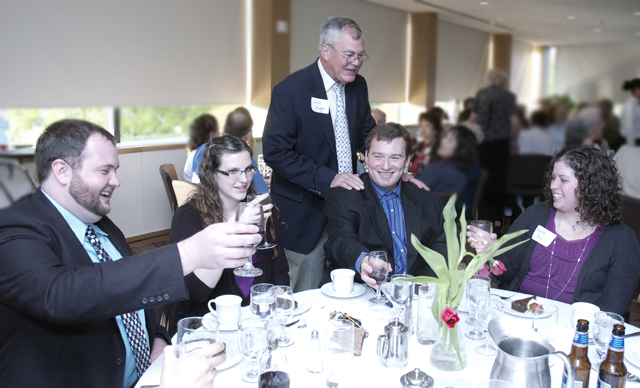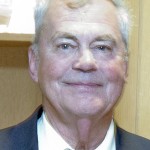5 Questions With . . . Pete Pringle on 44 Years in the Chemistry Department

Q: Professor Pringle, you joined Wesleyan’s Chemistry Department as an assistant professor in 1968. How have times changed?
A: I started here before there were female students. Wesleyan had NO COMPUTER at all, and Ph.D. programs were just starting. At the time, we had 11 faculty in the department: Al Fry, Gill Burford, John Sease, Jose Gomez-Ibanez, Peter Leermakers, Julia Tan, Don Sebera and Larry Faller were here, and two faculty came here when I did–Paul Haake from UCLA and Peter Wharton from Wisconsin. Of this group, Al Fry is the only one still working in the department. The department had just moved out of Hall Chemistry Labs, a building that had columns that juxtaposed Olin. The Science Library is there now. Ted Etherington was president and many faculty smoked pipes during faculty meetings. All wore coats and ties and there were very few women faculty. The chemistry department nowadays is slightly larger than in 1967-68, and has grown in theoretical, inorganic, biochemistry and spectroscopy. There are many high-field NMR spectrometers also. I was the first occupant of my brand new office in Hall-Atwater and I am still there.

Q: What are you research interests?
A: My research group, which was comprised of 60 undergraduate and 16 graduate students, worked on far-infrared spectroscopy on ring molecules such as diboranes and collision induced rotation-translation spectroscopy between nonpolar molecules. The kinetics of the reactions of trace specific cogeners of polychloro-biphenyls- or PCBs – in water. PCBs became ubiquitous in the environment and they are concentrated up the food chain and have health consequences. One way they can be destroyed is by oxidation–so we studied that. Much of my other studies have been on the forces that cause gas phase molecules to turn into liquids. The small forces between molecules that lead to liquids are poorly understood–so we study that.
Q: What was your biggest research accomplishment?
A: My lab confirmed the existence of a 50-year-old prediction of a ring puckering vibration in diboranes. Diborane is a very peculiarly bonded small-ring molecule that ignites spontaneously in wet air. Our lab showed that the rate of oxidation of PCBs was a function of the number of chlorines in the molecule and was independent of the positions of substitution. PCBs are molecules that have one or more chlorine molecules placed on two bonded benzene rings. These liquids do not burn or decompose and were added to the oil in electric company transformers to keep the transformers from exploding and burning as they did before PCBs were discovered by chemists. They were so stable that they accumulated in the environment; however they save many, many lives by keeping transformers from exploding and burning near schools, hospitals and buildings in cities.
We proved that gas phase collisions between non-polar molecules were dominated by local structures of the molecules and not consistent with the then-existing theory for induced dipolar collisions. We showed that the rare gases acted like Lewis Bases when forming a van der Waals complex with small ring molecules. Van der Waals forces are the attractive forces that are the reason that nitrogen gas can be turned into a liquid. These are the forces needed to liquify natural gas that is primarily methane. The fracking process that has led to stupendous increases in natural gas supply in the U.S. must be cooled and compressed to form liquid to be transported; van der Waals forces that are poorly understood are responsible for the liquid formation.
Q: What classes did you teach at Wesleyan?
A: My first classes were Quantum Chemistry, Introductory Chemistry and Instrumental Analysis. Then Physical Chemistry, Thermodynamics and Spectroscopy and Integrated Laboratory. I taught Environmental Chemistry from the 60’s through the 2010’s (a junior-level course that required Organic Chemistry). I taught Introductory Chemistry for many decades. I always taught research tutorials to many undergrad chem majors and grad students.
Q: What do you plan to do in your retirement?
A: For the past two decades, I have been collaborating with Stew Novick in determining the structures of rare gases as guests on small-ring molecules. The rotational spectra are observed in the gas phase in a pulsed supersonic jet at a temperature of 3 Kelvin with a Fourier Transform Microwave Spectrometer. I am a continuing part of Professor Novick’s research group and acting as a very cheap postdoc, so research will continue. I maintain wonderful contacts with my friends in the Wasch Center for Retired Faculty that I know will continue.

